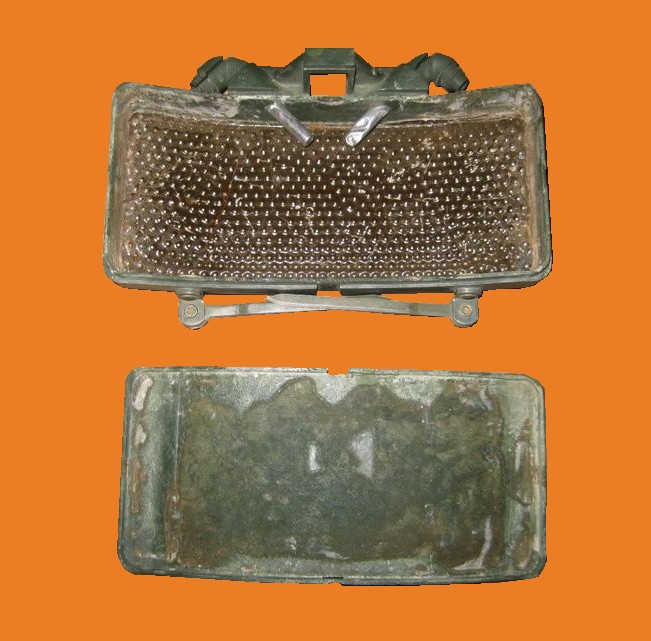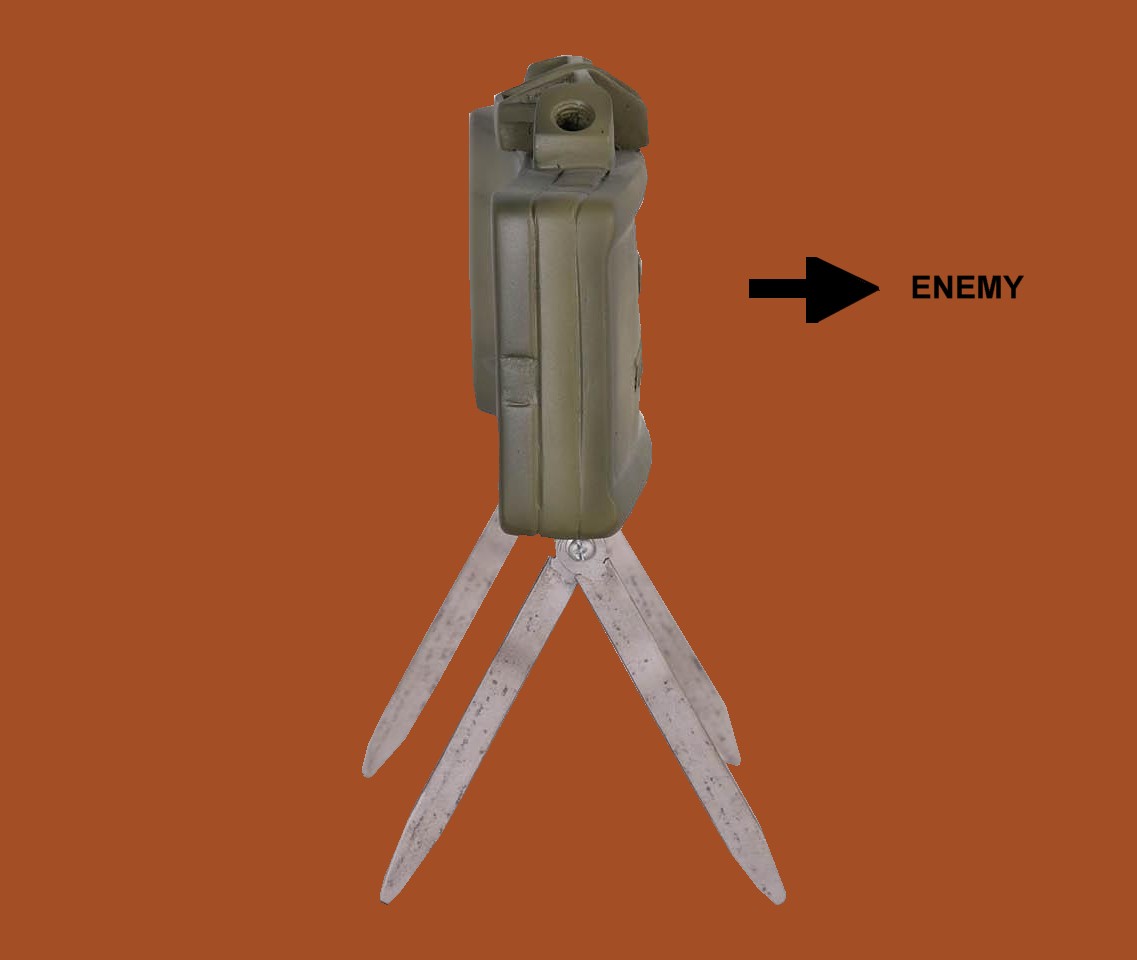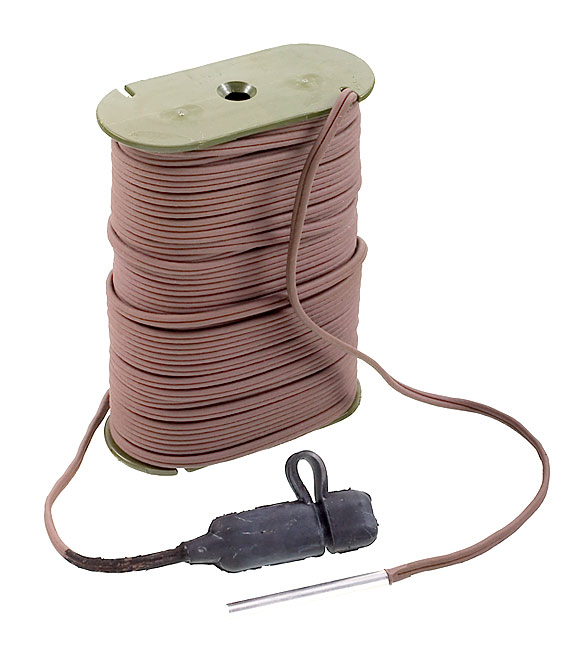Donate
General Claymore mine information.
CHAPTER 3 - TRAINING.
17. General.
Training is divided into two phases-phase I and phase II. Phase I training is designed to familiarize the soldier with the characteristics, capabilities, and installation of the M18Al using its electrical firing system. In phase II training, the soldier receives further instruction in nonelectrical firing systems, tactical employment, and other advanced training. This training is designed to fully prepare the soldier to employ the mine effectively in combat.
18. Phase I Training.
a. Purpose. To provide the minimum amount of training required to employ the M18Al with the electrical firing system in the controlled role, using the components found within the M7 bandoleer.
b. Elements of Phase I Training. The soldier receives training in the following areas:
(1) Characteristics, mechanical training, and capabilities of the M18Al (para 3-10),
(2) Aiming, sequence of installation, circuit testing, and disarming (para 12, 15, and 16a).
(3) Safety procedures (app. III).
(4) Camouflage techniques ( para 14).
c. Practical Exercises. Emphasis should be placed on practical exercises using inert or simulated mines.
c. Practical Exercises. Initially, practical exercises should be conducted in installing inert or practice mines using pull wire and tripwire actuation of the mine and in dual firing and ring main systems. Inert or simulated items, such as detonating cord, nonelectrical firing de vices, and caps should be substituted for live explosives. Practical exercises should emphasize employment of the CLAYMORE in various tactical-situations.
d. Use of Live Explosives. As the soldier becomes more proficient in inert installation training progresses to the use of live explosives. He is trained in firing systems and demolition equipment as described in FM 5-25.
e. Proficiency. To maintain proficiency after the completion of phase II training, the soldier should employ inert mines during field training in both the controlled and uncontrolled roles.
CHAPTER 4 - TACTICAL EMPLOYMENT.
20. General.
The M18Al mine is primarily a defensive weapon. It may be employed to a limited ex tent in certain phases of offensive operations. The M18Al has the same basic capabilities as antipersonnel mines and can be used in most situations where other types of antipersonnel mines are employed. In addition, the M18Al has the capability of being sighted directionally to provide fragmentation over a specific area and does not necessarily rely upon chance detonation by the enemy. The M18Al is adaptable for covering the ranges between maximum hand grenade throwing distance and the minimum safe distance of mortar and artillery supporting fires.
21. Defense.
a. General. The M18A1 normally is employed in the controlled role as an antipersonnel mine. When used in conjunction with other types of antipersonnel and antitank mines, the employment of the M18Al will be governed by the procedures described in FM 20-32.
b. Minefields.
(1) Ease of transportation, installation, and removal facilitates the use of the M18Al in protective, defensive, and nuisance minefields.
(2) The M18Al, with its controlled dispersion pattern, is designed to cover areas where enemy personnel attacks in force are anticipated. They may be located singly, or in multiples (figure 8).
(3) CLAYMORES may be mixed with antipersonnel and antitank mines in conjunction with nuisance minefields and arranged for detonation by tripwire.
(4) The M18Al can supplement other mines within a protective minefield, and can be installed and employed in either the controlled or uncontrolled roles. The configuration and composition of the minefield pattern varies with the terrain and tactical situation.
(5) The M18Al can be used to cover portions of defensive minefields by emplacing it on the minefield perimeter, or within the field to cover lanes between mines. The controlled method of employment is desirable. Care should be taken to insure that the mine is properly aimed to provide fragmentation effect over and not into the minefield. This can be accomplished by securing the mine to trees or other elevated objects which are at least 2 meters above ground level.
c. Final Protective Fires. The M18Al can be employed to fill the dead space of the final protective fires of automatic weapons in defensive positions. Depending on the importance of the area being protected, CLAYMORE mines may be emplaced behind each other in relatively close proximity. To avoid the risk of sympathetic detonation, mines should be placed no closer than 5 meters apart. Normally, mines closest to the enemy will be detonated first. If the enemy continues to approach a defender's position, he will successively detonate rearward mines as he comes within their range. In determining positions for emplacing CLAY MORE mines, consideration must be given to the effects of back blast on friendly positions.
d. Security of Outposts. CLAYMORE mines are easily transported and rapidly emplaced for security of outposts. The mines can be installed for complete perimeter coverage of a position. Time permitting, several rows can be employed. The mine can also be emplaced to assist in covering withdrawals from outposts.
(4) Reserve forces in blocking positions or assembly areas can use CLAY MORES to augment their local security forces.
f. Local Security of Halted Columns. CLAY MORES may be carried on tanks and other types of vehicles and emplaced for perimeter defense of such vehicles when they are halted. As soon as they arc halted, personnel will emplace the CLAYMORES for close-in protection of the vehicles. Controlled electrical firing should be employed for simplicity, speed, and safety.
g, Roadblocks and Obstacles.
(1) In conjunction with roadblocks, CLAYMORES should have a clear field of fire to cover the avenue of approach. Additional CLAYMORES should be placed on the friendly side of a roadblock. When used to cover obstacles, the CLAYMORE should be placed 20 to 30 meters on the friendly side of the obstacle. This distance also applies to barbed wire obstacles.
(2) Controlled detonation is most desirable, since the firer can best judge the exact moment of detonation. However, uncontrolled detonation may be employed allowing the enemy to activate the mine when he attempts to breach the obstacle (para 10).
(2) During a night-type withdrawal, which is conducted without enemy pressure, CLAYMORES may be emplaced for use by the detachments left in contact, using both controlled and uncontrolled methods of employment. CLAYMORES may be used to assist in covering the gaps left by the main force. They may be used singly or in conjunction with other mines to mine routes of withdrawal.
(3) If used, the rear guard can also employ M18Al's using the uncontrolled means of firing to assist in covering its withdrawal to the rear. Utilization of the M18Al in this manner provides added security for the detachments left in contact, or the rear guard, and can delay the enemy's advance. However, since the M18Al is employed in the uncontrolled role, it must be reported and recorded as a mine.
(4) If a covering force is used during a daylight-type withdrawal, CLAY MORES can be employed by the covering force in a manner similar to that used in any blocking position and also employed using the same techniques as used during a night-type withdrawal.
22. Offense.
a. General. The M18Al can be employed in certain phases of offensive combat, and provisions for its use should be considered in planning offensive operations. The mine easily can be transported by attacking troops for defense of assembly areas, to provide security during the conduct of the attack, and for protection during the reorganization and consolidation of the objective. The M18Al also provides an economical means for establishing effective ambushes.
(4) Defense of supporting elements during the attack.
(a) CLAYMORE mines can be utilized in command posts or in the defense of supporting units, such as mortar and artillery batteries. Immediately after displacement, and as the first echelon of these supporting units moves into new positions, adequate defense measures will be established. CLAYMORES should be emplaced initially to cover likely avenues of enemy approach; eventually, they should be integrated with the fully developed defensive position. When displacements occur, the mines will be disarmed, collected, and moved to the next position. If the area is to be occupied by other units, the mines may be left in position by mutual arrangement with the relieving unit.
(b) When CLAYMORE mines are employed in the defense of command posts, supporting unit installations, or reserve forces in the rear of the battle positions, they must be well marked and personnel should be familiarized with their location.
c. Ambush. CLAYMORE mines provide an excellent, economical means for establishing effective ambushes deep in enemy territory with a minimum use of friendly personnel. Small groups can easily transport a large number of CLAYMORES; for example, one man can carry six CLAYMORES, enough to cover a frontage up to 300 meters. CLAYMORES may be employed in any or all of the following ways:
(1) Laterally along the killing zone of the ambush, between the ambush element and the killing zone. This method inflicts maximum damage on dismounted troops and is particularly useful in countering enemy immediate action drills that include assault into the ambush element.
(2) At the front and rear of the killing zone (fig, 19). This method provides enfilade fire into the killing zones, greater economy of employment, and is particularly useful when the route through the killing zone is restricted in width. It also provides a good counter in enemy immediate action drills that include withdrawal or forward movement out of the killing zone along the original route.
(3) Laterally or at the front and rear of the killing zone, on the far side of the killing zone from the ambush element (fig. 19). This method of employment is particularly effective in countering enemy immediate action drills that include maneuver or withdrawal out of the killing zone by moving away from the ambush element. Care must be taken to insure the am bush element is protected from the fragmentation of the Ml8A1.
(4) Defiles. CLAYMORES are particularly effective in covering areas that might afford the enemy cover from small-arms fire, such as defiles. CLAYMORES used in ambushes may be emplaced on the ground, in trees, or on other upright objects which insure a clear, unobstructed, sighted field of fire. Controlled detonation is desirable, since this permits the firing to be delayed until that portion of the enemy which the commander desires to catch in the ambush is in the killing zone. Mines should be carefully camouflaged to prevent their detection.



